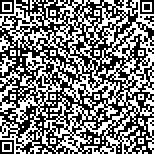李响,张洪蕊,曹海杰,等.重复经颅磁刺激对脑卒中后上肢运动功能影响的功能性近红外光谱研究[J].中华物理医学与康复杂志,2024,46(2):123-128
扫码阅读全文

|
| 重复经颅磁刺激对脑卒中后上肢运动功能影响的功能性近红外光谱研究 |
|
| |
| DOI:10.3760/cma.j.issn.0254-1424.2024.02.005 |
| 中文关键词: 重复经颅磁刺激 近红外脑功能成像技术 脑卒中 |
| 英文关键词: Transcranial magnetic stimulation Functional near-infrared spectroscopy Stroke |
| 基金项目:济宁市重点研发计划项目(2021YXNS110),山东省医药卫生科技项目(202316010454) |
|
| 摘要点击次数: 3729 |
| 全文下载次数: 4644 |
| 中文摘要: |
| 目的 近红外脑功能成像(fNIRS)技术的检测下,观察重复经颅磁刺激(rTMS)对脑卒中患者上肢运动功能和大脑皮质激活的影响。 方法 将符合纳入标准的60例脑卒中患者随机分为干预组和对照组,每组30例。所有患者均给予常规的康复训练(包括药物治疗、偏瘫肢体综合训练、物理因子疗法等),每日治疗60 min,6 d/周,持续4周。对照组在常规康复训练的基础上给予假rTMS刺激,干预组在此基础上给予rTMS刺激,每日1次,每次15 min,6 d/周,持续4周。分别于治疗前和治疗4周后(治疗后),采用Fugl-Meyer上肢运动功能评分量表(FMA-UE)对2组患者的上肢运动功能进行评估,采用fNIRS技术检测并比较治疗前后2组患者的前额叶皮质(PFC)、运动皮质(MC)和初级躯体感觉皮质(PSC)的激活程度(β值),并进一步分析和比较不同病变脑区的β值。采用Pearson相关性分析法进行FMA-UE评分变量与β值变量的相关性分析。 结果 ①治疗前,干预组和对照组患者的FMA-UE评分[(32.96±3.24)和(32.03±4.11)分]组间差异无统计学意义(P>0.05);治疗后,2组患者的FMA-UE评分[(42.33±3.80)和(39.23±4.77)分]均较组内治疗前明显增加(P<0.01),且干预组明显高于对照组(P<0.01)。②治疗前,2组患者PFC、MC和PSC皮质的β值组间差异无统计学意义(P>0.05)。治疗后,干预组CH27和CH13的β值较对照组明显提高(P<0.05);在左侧病变脑区患者中,干预组治疗后的CH27和CH13的β值较对照组明显提高(P<0.05),且左侧干预组CH13的β值与组内治疗前比较,差异有统计学意义(P<0.05)。③Pearson相关性分析结果显示,干预组患者的FMA-UE评分变量与CH27及CH13的β值变量呈中度相关(P<0.05),对照组的FMA-UE评分变量与CH27的β值变量呈低度相关(P<0.05)。 结论 rTMS有利于激活左侧病变脑区的兴奋性,提高患者的上肢运动功能,且上肢运动功能的改善与左前额叶皮质(LPFC)、左初级躯体感觉皮质(LPSC)的激活具有相关性。 |
| 英文摘要: |
| Objective To explore any effect of repeated transcranial magnetic stimulation (rTMS) on the upper limb motor function and cerebral cortex activation of stroke survivors. Methods Sixty stroke survivors were randomly divided into an intervention group and a control group, each of 30. In addition to routine rehabilitation training (including drug therapy, comprehensive hemiplegic limb training and physical factor therapy), the intervention group received 15 minutes of rTMS daily, five days a week for 4 weeks while the control group was given false rTMS. Upper limb motor function was evaluated before and after the treatment using the Fugl Meyer upper limb motor function rating scale (FMA-UE). Functional near-infrared spectroscopy was used to detect and compare the activation (β values) of the prefrontal cortex, the motor cortex and the primary somatosensory cortex in the 2 groups. The correlation between the FMA-UE scores and the β values was quantified. Results ①There was no significant difference in the average FMA-UE scores between the two groups before the treatment. Afterward, though both groups′ average scores had increased significantly, there was significantly greater improvement in the treatment group. ②There was also no significant difference in average β value between the two groups before the experiment, but afterward the average βs of channels 27 and 13 in the intervention group were significantly higher than in the control group. Moreover, in patients with lesion in the left brain, the β-values of CH27 and CH13 were also significantly higher than the control group (P<0.05). ③The FMA-UE scores of the intervention group were moderately correlated with the CH27 and CH13 β values, but those of the control group were only weakly correlated with the β values of CH27. Conclusion Transcranial magnetic stimulation activates a lesioned left brain region, improving upper limb motor function. The improvement is correlated with the activation of the left prefrontal cortex and the left primary somatosensory cortex. |
|
查看全文
查看/发表评论 下载PDF阅读器 |
| 关闭 |